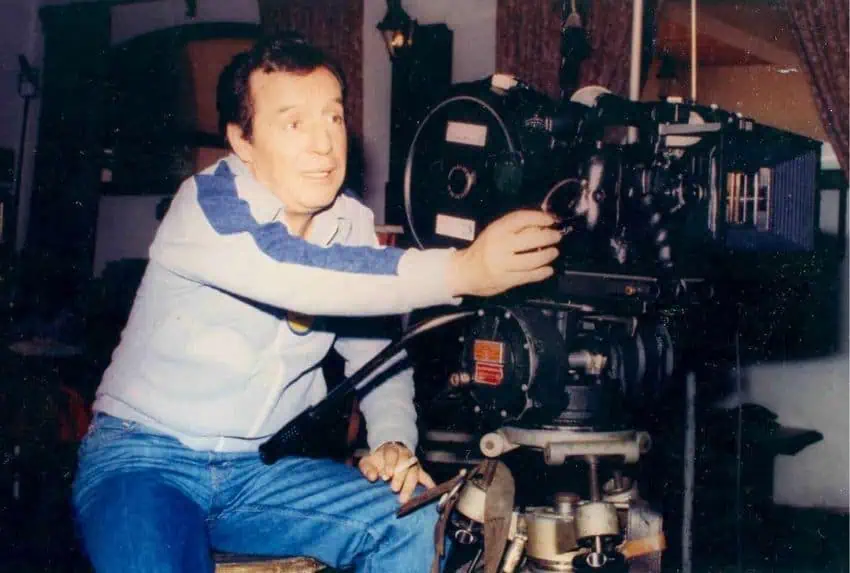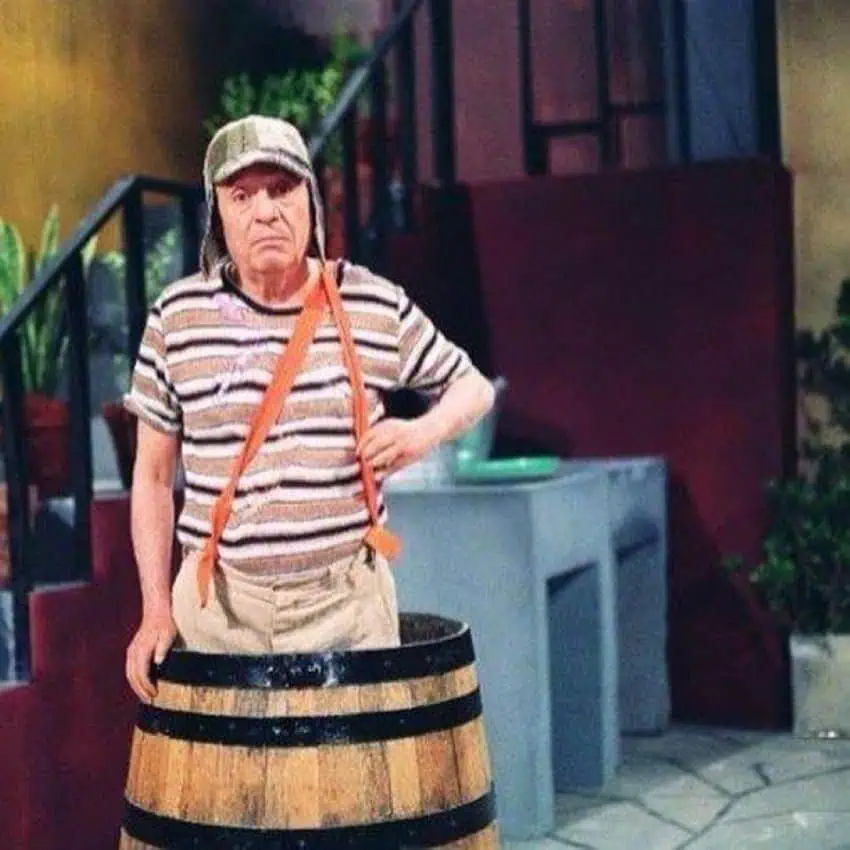“El Show de Chespirito” was a slapstick comedy created for a young audience. It initially aired from 1970 to 1973 and then again from 1980 to 1995, featuring iconic characters in situational sketches. Back then, there weren’t many television channels to choose from, so everyone watched whatever Televisa was airing. Broadcast every Monday at 8 p.m., I fondly remember watching it with my siblings at the dinner table.
Roberto Gomez Bolaños, the creator
In the 1950s, Roberto Gómez Bolaños began his career as a writer for an advertising agency before transitioning to writing for TV shows. He adopted the nickname Chespirito because someone who admired his writings called him “Shakespirito,” meaning “little Shakespeare.”

In the 1970s, Bolaños created “El Show de Chespirito,” for which he served as writer, director, and leading actor. The show featured a colorful cast of characters, all brought to life by a handful of talented actors who switched between roles.
This ensemble’s versatility and charm contributed significantly to the show’s enduring popularity. At its peak, “Chespirito” was a cultural phenomenon that captivated an estimated 350 million viewers per episode across Mexico and Latin America.
El Chavo del 8, the mistreated orphan
However, the messages conveyed by Chespirito would fail children’s programming standards these days. The star of the “Chavo del 8” segment was an orphaned boy living inside a wooden barrel on the patio of a humble neighborhood. The community made fun of him for being poor and unwanted. All he ever craved was a ham sandwich, which he rarely got.
Continually wearing the same dirty and torn outfit, El Chavo was a sad, lonely, hungry kid. While I hope everyone viewed this segment as a lesson in how not to treat those in need, I’m afraid it normalized neglect with a laugh track instead.

Neighbors harshly scorned El Chavo for every blunder, despite his young age. Whenever he got caught, he’d lower his gaze, shrug, and apologize with the catchphrase “fue sin querer queriendo” (meaning “I did it unintentionally on purpose”). This phrase, delivered with a mix of innocence and connivance, became iconic.
When facing an overwhelming threat, El Chavo would suffer a garrotera. In this condition his knees and arms would weaken, and he’d adopt a frozen, absent gaze. The only way to snap him out was to throw water in his face. I like to believe that anyone suffering such dissociative symptoms today would be provided with proper mental healthcare.
El Chapulín Colorado, the useless superhero
Gomez Bolaños also played the Chapulín Colorado character too. This stumbling rescuer wore a bright red unitard that covered him from head to toe and showcased his scrawny figure. He wore his yellow underwear on top of his pants, a parody of Superman. His vinyl antennas allowed him to sense danger, and he fought off criminals with a squeaky plastic hammer called chipote chillón.
Using the special effects available for television at the time, he would sometimes take chiquitolina pills that would shrink him to 8 inches tall, enabling him to escape tricky situations. Despite his gadgets, El Chapulín Colorado was more talk than action, often speaking in scrambled proverbs. This added to the hopelessness of the characters in danger when he spontaneously appeared upon asking: “Who will help me now?”

Profesor Jirafales, the teacher you don’t want for your kids
Featuring some iconic characters, this class was taught by the sole member of the faculty. Profesor Jirafales was portrayed by the actor Ruben Aguirre. Constantly smoking a cigar, he frequently lashed out angrily at the children, humiliating them for not knowing the answer to random questions. He frequently screamed “ta ta taaaaaa” in a fit of rage, attempting to restore order when the classroom turned into chaos.
Doctor Chapatín, the inept physician
Bolaños also portrayed Doctor Chapatín, a senile medical professional. He was the only doctor available yet hopelessly incapable. Known for his hot temper, signs of dementia, and significant hearing loss, Doctor Chapatín would often say “me da cosa” (meaning “it gives me the creeps”) to avoid unpleasant tasks. When angered, he didn’t hesitate to whack anyone nearby with his bag, especially if they dared call him old. This character’s exaggerated flaws highlighted the show’s critique of professional incompetence and the absurdity of relying on such experts.
Legal battles are no funny business
In the early 70s, Roberto Gómez Bolaños and Florinda Meza met while she was performing on his show. Their professional relationship blossomed into a personal one, despite Bolaños being married with six children. This relationship led to significant tension, as Bolaños’ first family never accepted Meza. The couple maintained a long-term partnership, both personally and professionally, and eventually married in 2004.
There have been numerous lawsuits over copyright issues. Years after ending production, many actors wished to continue portraying their beloved characters in other projects. Bolaños took them to court, arguing that he created and owned them. His death in 2014 prompted many tributes, and multiple unsettling truths emerged.

Since Bolaños’ death, his son Roberto Gómez Fernández has been heavily involved in managing and protecting his father’s legacy. Fernández became the head of Grupo Chespirito, which oversees the rights to his father’s works. Fernández has been involved in several legal disputes, notably with Televisa, which resulted in the cessation of the airing of “Chespirito” programs in 2020.
The legal dynamics between Florinda Meza and Roberto Gómez Fernández have been complex and contentious. Meza has been actively involved in legal battles to protect her husband’s legacy and her own rights. She has initiated legal action against Gómez Fernández, particularly regarding the production of a biographical series about Bolaños’ life. She claims that the series did not secure her consent and she is portrayed with no regard for truth or respect.
The complex legacy of this iconic show blends its enduring charm with the darker aspects of its behind-the-scenes dynamics. The show’s silliness and memorable catchphrases continue to hold a special place in the hearts of millions. The legacy of Roberto Gómez Bolaños lives on, both celebrated and critiqued, as one of the most influential figures in the history of Mexican television.
Sandra Gancz Kahan is a Mexican writer and translator based in San Miguel de Allende who specializes in mental health and humanitarian aid. She believes in the power of language to foster compassion and understanding across cultures. She can be reached at: sandragancz@gmail.com
